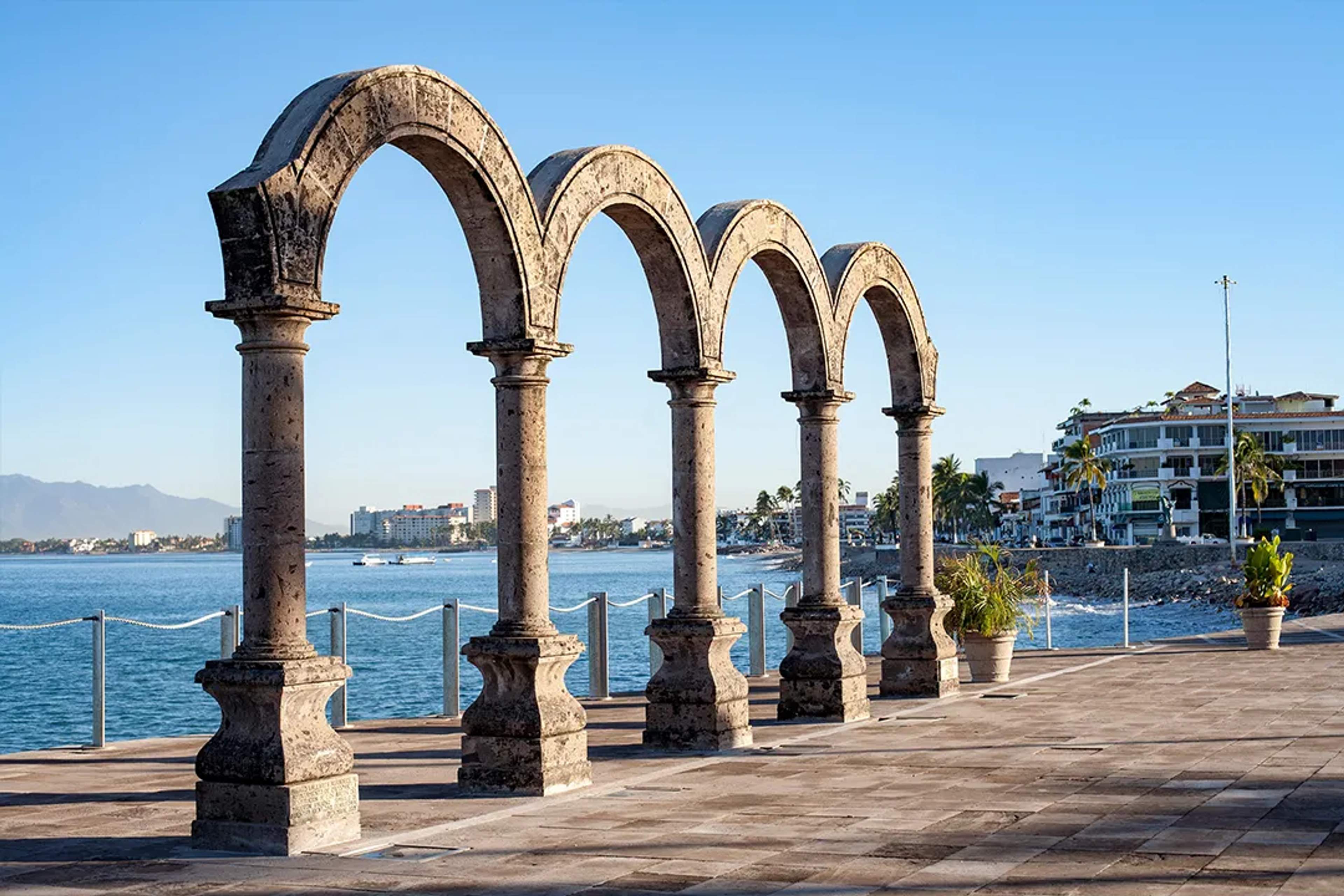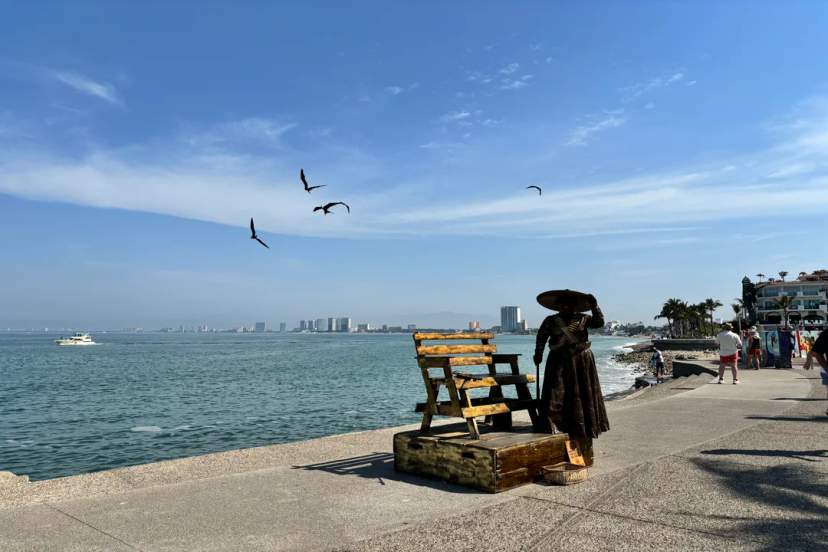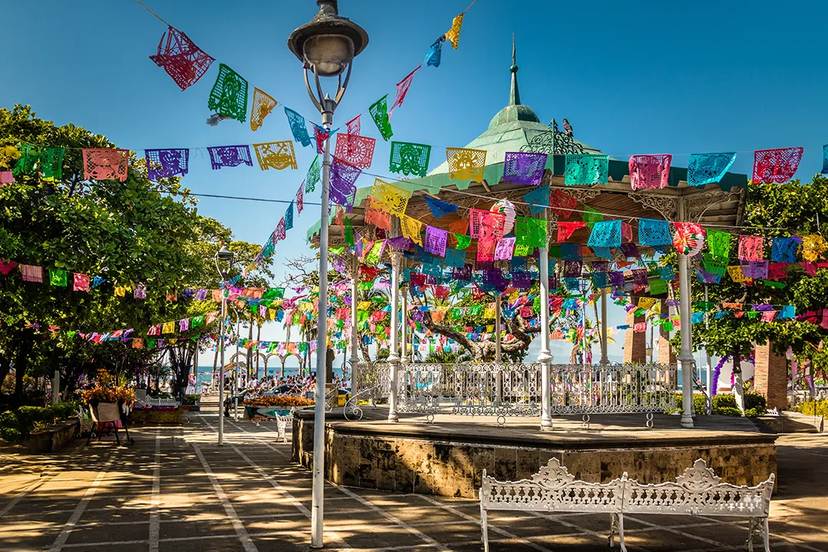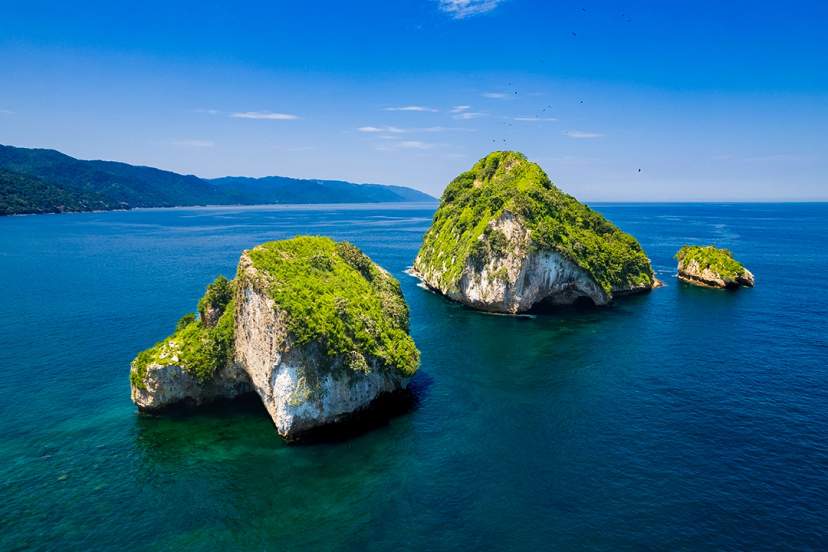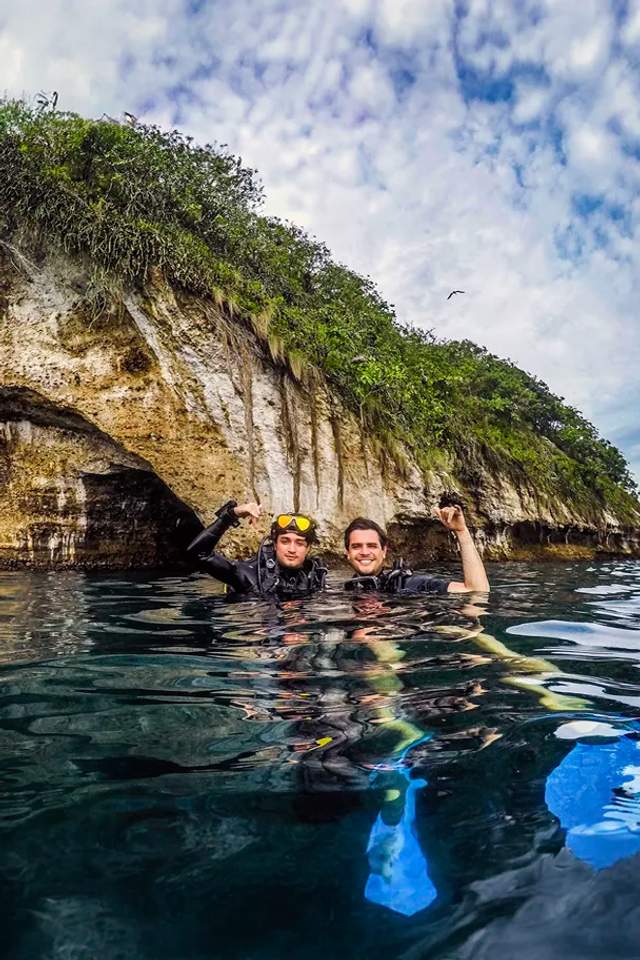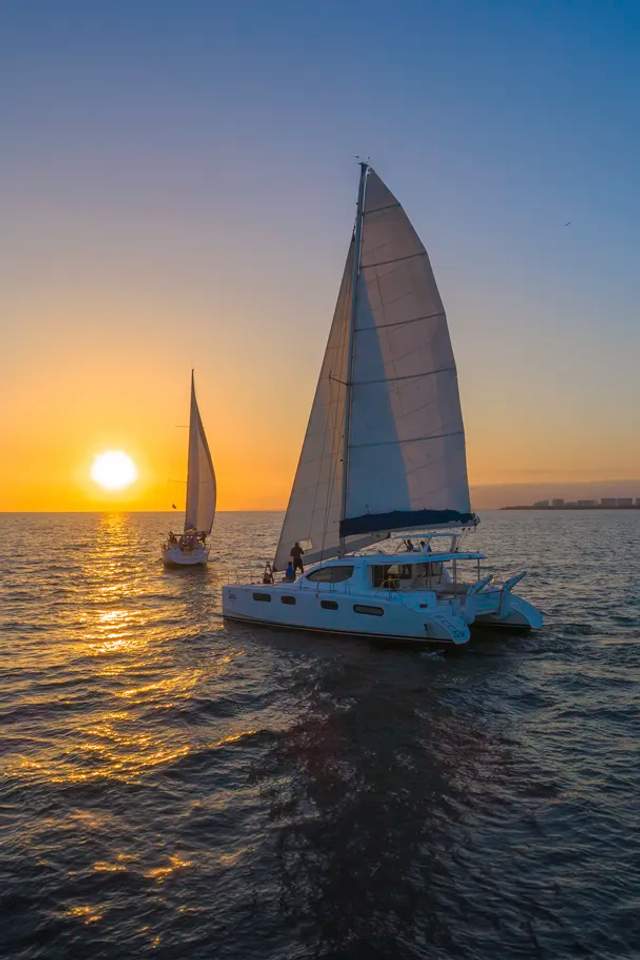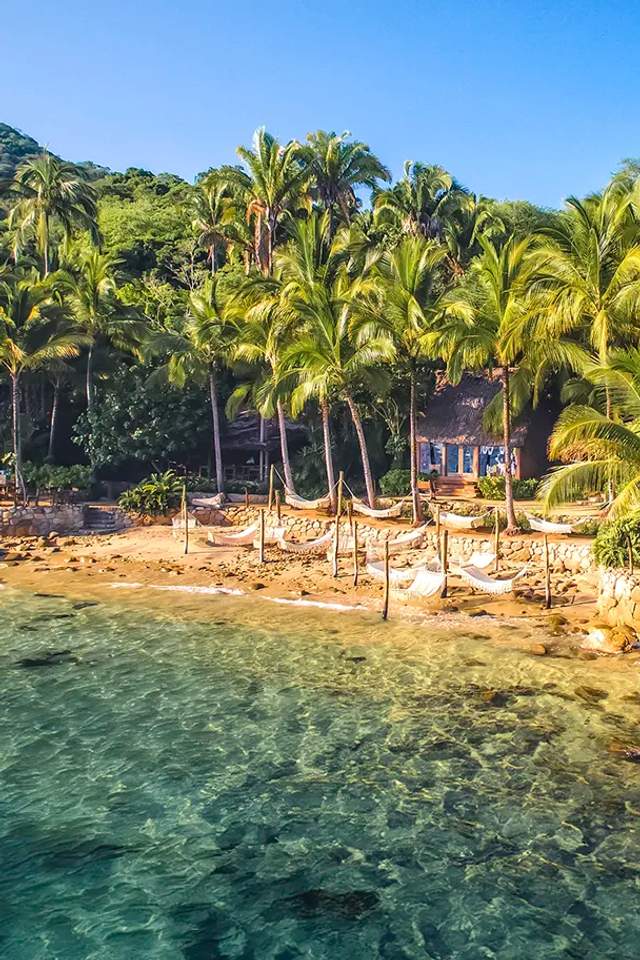Where the Sierra Madre Mountains meet the Pacific, Puerto Vallarta comes to life as one of Mexico’s most unique coastal gems. Here, lush forests, sparkling beaches, and marine sanctuaries come together to create a kind of biodiversity you won’t find anywhere else on the Pacific coast.
In this guide, we’ll show you both sides of Vallarta — from the history and art that line the famous Malecón to the protected marine parks where researchers study rare ocean life. Whether you’re into culture, nature, or a bit of both, this guide highlights the experiences that make Puerto Vallarta a favorite for curious travelers and eco-adventurers alike.
1. Malecón Boardwalk
The Malecón functions as Puerto Vallarta's cultural spine, stretching along the bay as both a gathering place and an open-air sculpture gallery. Built as a breakwater and later expanded, this historic boardwalk has evolved through nearly 90 years of urban planning into the city's social and artistic center.
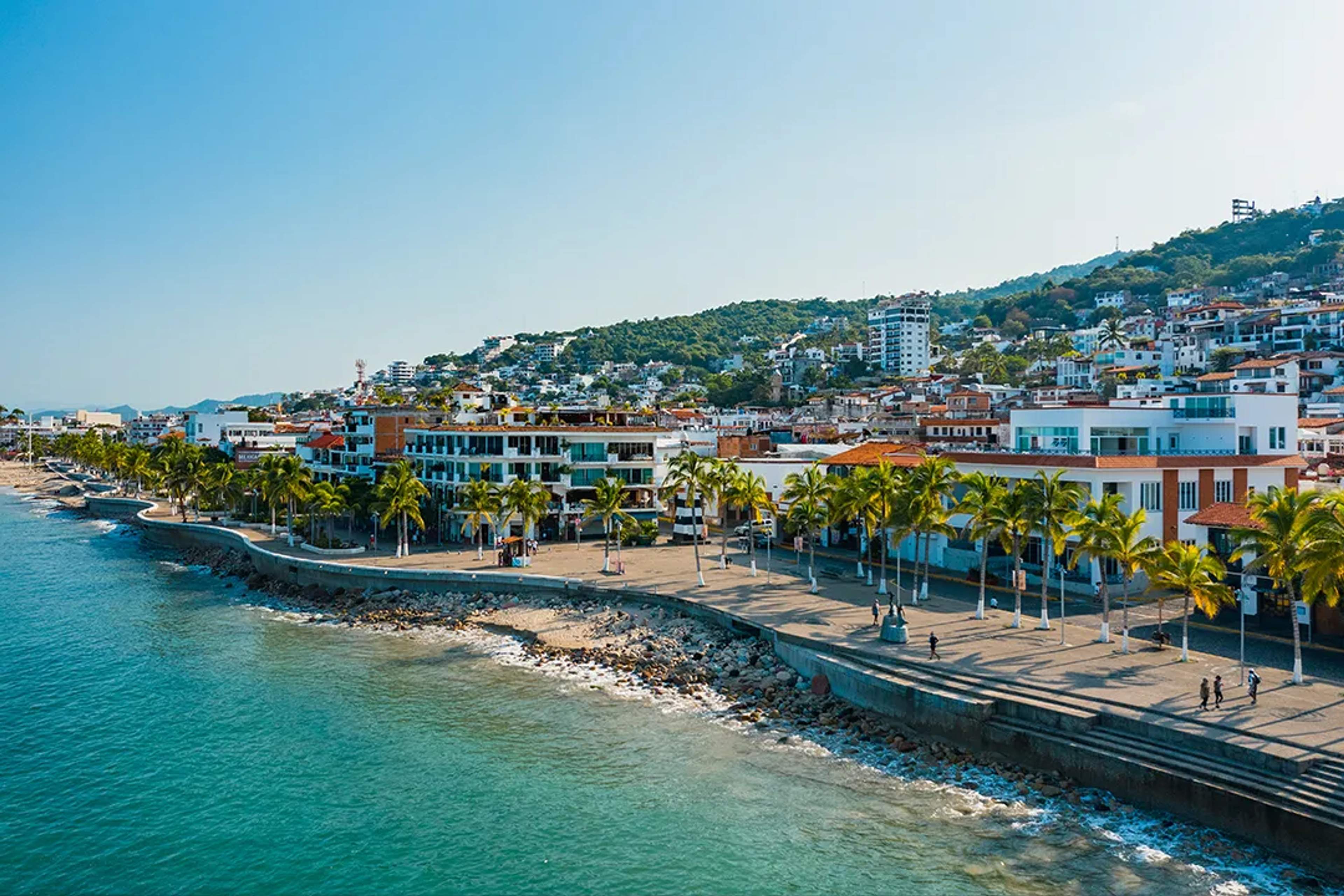
Bronze sculptures by Mexican artists line the route, spanning decades. José Ramiz Barquet's "Nostalgia" anchors the southern end, while Mathís Lídice's "The Millennia" commands attention further north, positioning Puerto Vallarta as a cultural destination through public art that reflects local expression and regional identity.
We recommend exploring the Malecón during evening hours when street performers animate the boardwalk and local families gather along the seawall—this is where you experience Puerto Vallarta as a living community rather than a travel construct.
2. Zona Romántica (Old Town)
The Zona Romántica preserves Puerto Vallarta's most authentic urban character through cobblestone streets and traditional Mexican architecture that modern resort areas lack. We guide travelers through this district because it maintains the center of the city's cultural and artistic scene, concentrated in one of Puerto Vallarta's oldest neighborhoods.
Olas Altas Street serves as the primary cultural corridor, connecting the district's attractions through preserved colonial-era street design. The cobblestone network creates a natural pace for pedestrians that encourages exploration rather than rushing between destinations.
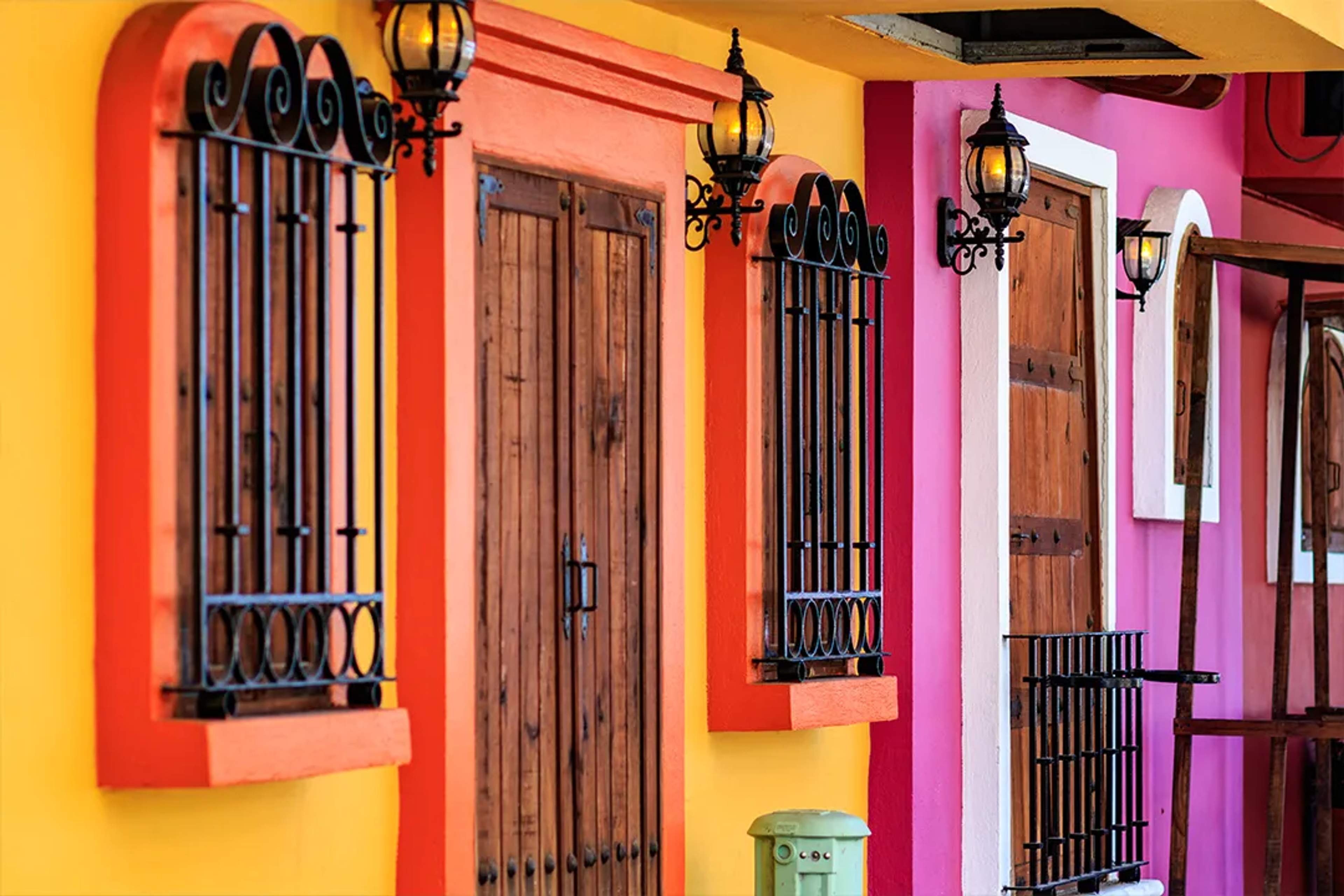
You'll find traditional artisan shops operating alongside streetside taco stands, preserving the street-level commerce that defines authentic Mexican neighborhoods. The Cultural Center anchors the eastern tip of Cuale River Island, providing formal cultural programming that complements the district's bohemian energy.
3. Church of Our Lady of Guadalupe
The distinctive crown-topped bell tower of the Church of Our Lady of Guadalupe dominates Puerto Vallarta's skyline as the city's most recognizable landmark. Built over three decades, this Baroque-Neoclassical blend represents the community's evolution.
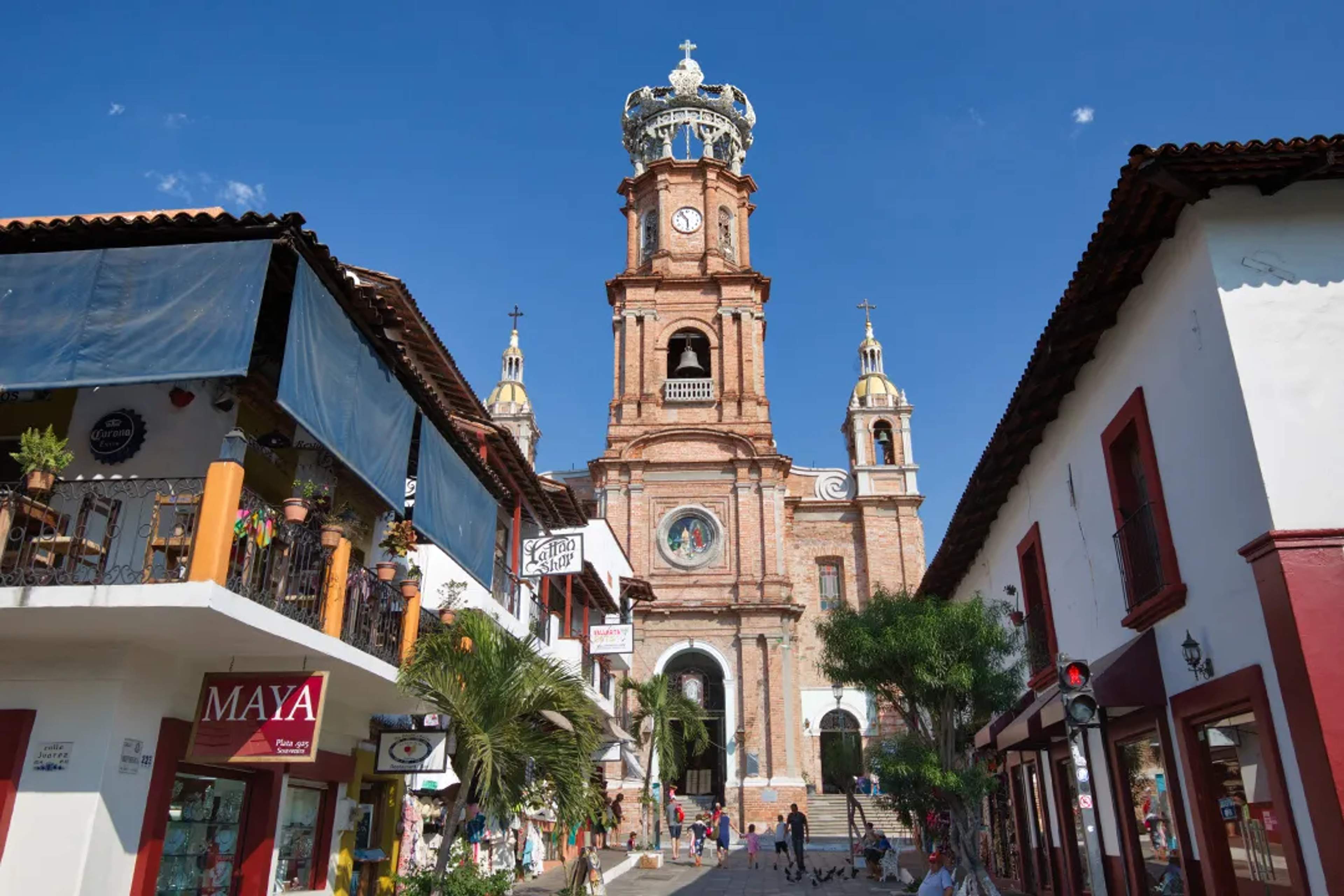
Its dedication to Mexico's patron saint connects the city to broader national heritage. Centrally located overlooking the main plaza, the church serves as both a spiritual center and navigational reference point for travelers exploring the historic core, visible from throughout downtown and the Malecón boardwalk.
4. Playa Los Muertos & Pier
Playa Los Muertos stands as Puerto Vallarta's premier beach destination, anchored by its iconic sail-shaped pier extending into the Pacific. Located in the heart of the Romantic Zone, this architectural landmark enhances rather than competes with the natural bay surroundings.
As the city's central hub for water activities, we launch parasailing adventures that provide stunning aerial views of Banderas Bay. The pier features elevated diving platforms that bypass shoreline breaks, extending to deeper, clearer waters ideal for swimming.
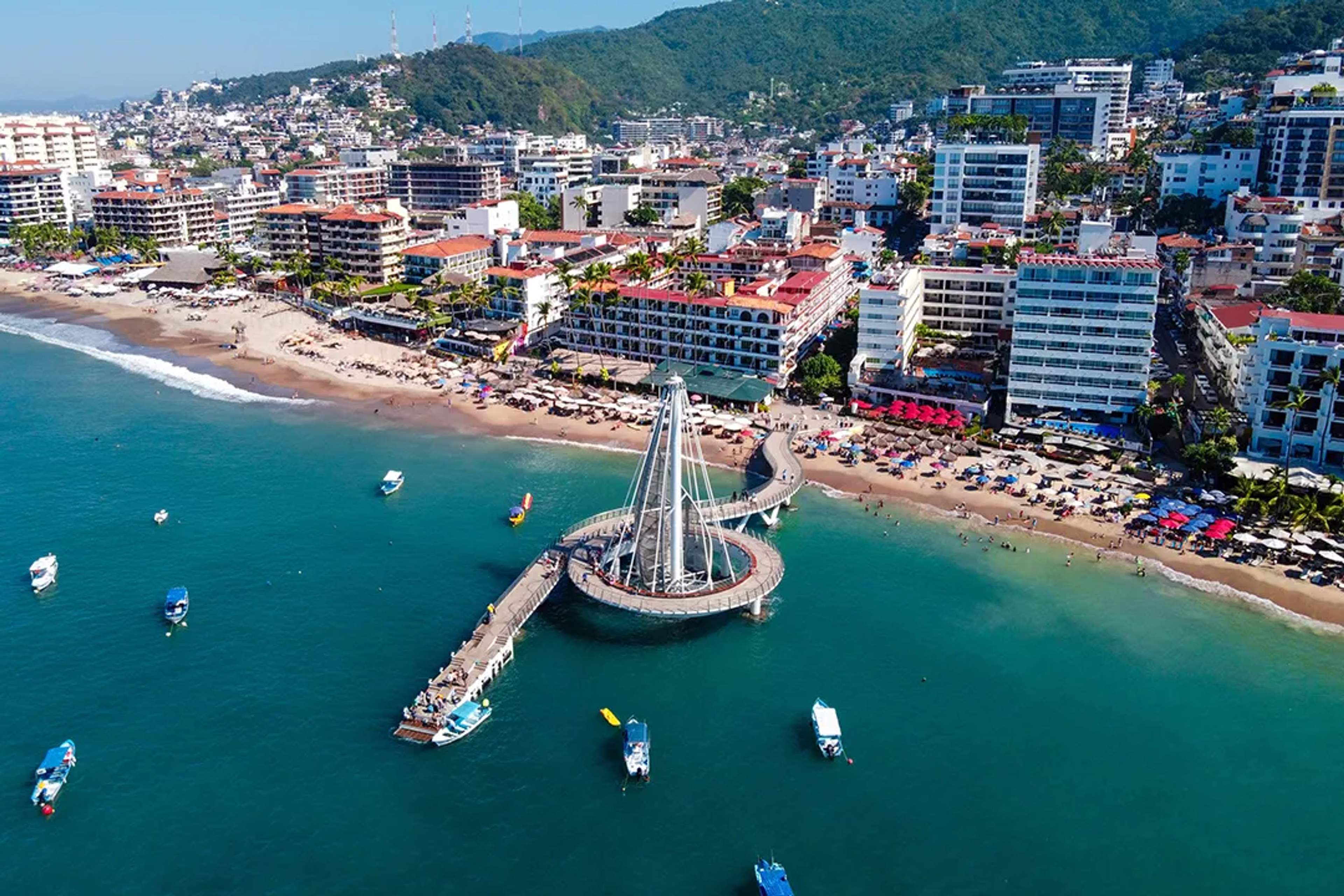
Beyond water activities, Playa Los Muertos serves as a cultural crossroads where visitors and locals converge. Its vibrant atmosphere combines recreation with authentic Mexican beach culture, while the pier's platforms become natural gathering spots at sunset, offering spectacular bay views.
5. Los Arcos National Marine Park
Granite rock formations rise dramatically from the Pacific Ocean, their natural arches and towering profiles visible from Puerto Vallarta's southern beaches. We guide travelers to Los Arcos because it operates as a federally protected marine park within Mexico's National System of Protected Areas, managed under conservation plans that govern visitor access and marine research activities.
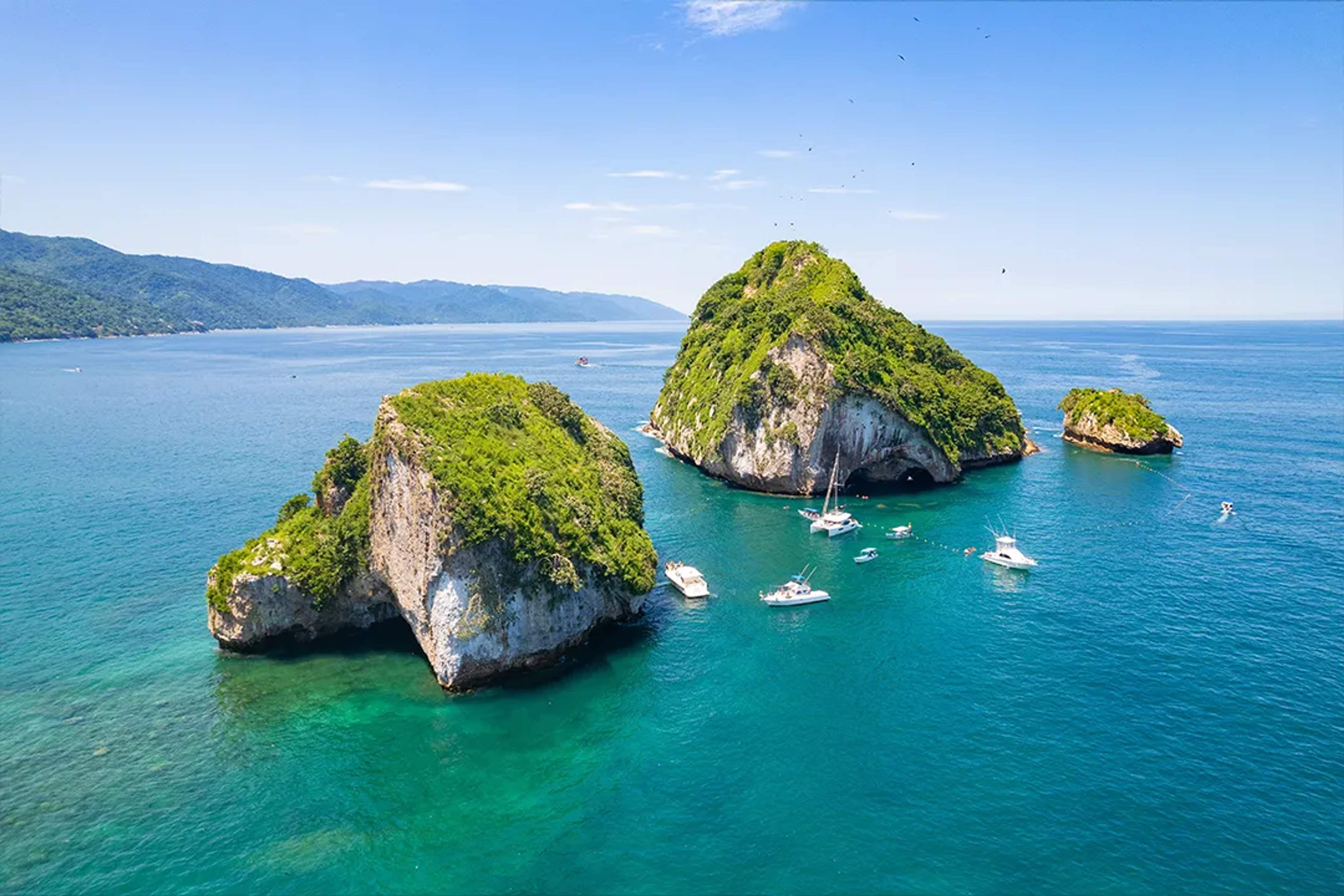
Los Arcos' significance extends beyond its photogenic rock formations:
- Scientific research documents Los Arcos as an established site for marine biodiversity studies
- Deep-water reef fish assemblages thrive at depths of 50 to 70 meters in the southern submarine canyon
- The protected waters maintain clarity and fish populations that disappeared from unprotected areas decades ago
- The area supports a wide variety of marine mammal species, according to UNESCO, within the Gulf of California marine biodiversity hotspot
This protected status creates exceptional underwater visibility and marine life diversity that makes Los Arcos a world-class diving destination.
We recommend our guided scuba tour for the ultimate Los Arcos experience. This tour includes one immersion for beginners or two for certified divers, led by experienced PADI Divemasters.
Explore underwater tunnels, caves, and arches while encountering lobsters, octopuses, tropical fish, sea turtles, and manta rays. All equipment, weights, light snacks, and purified water are provided, with wetsuits available upon request during cooler months.
6. Mirador Cerro de la Cruz
This viewpoint delivers Puerto Vallarta's best vantage point, with 360-degree panoramic views stretching from the airport through downtown to Los Arcos Marine Park. The reward for reaching Mirador Cerro de la Cruz justifies the significant physical challenge required to get there.
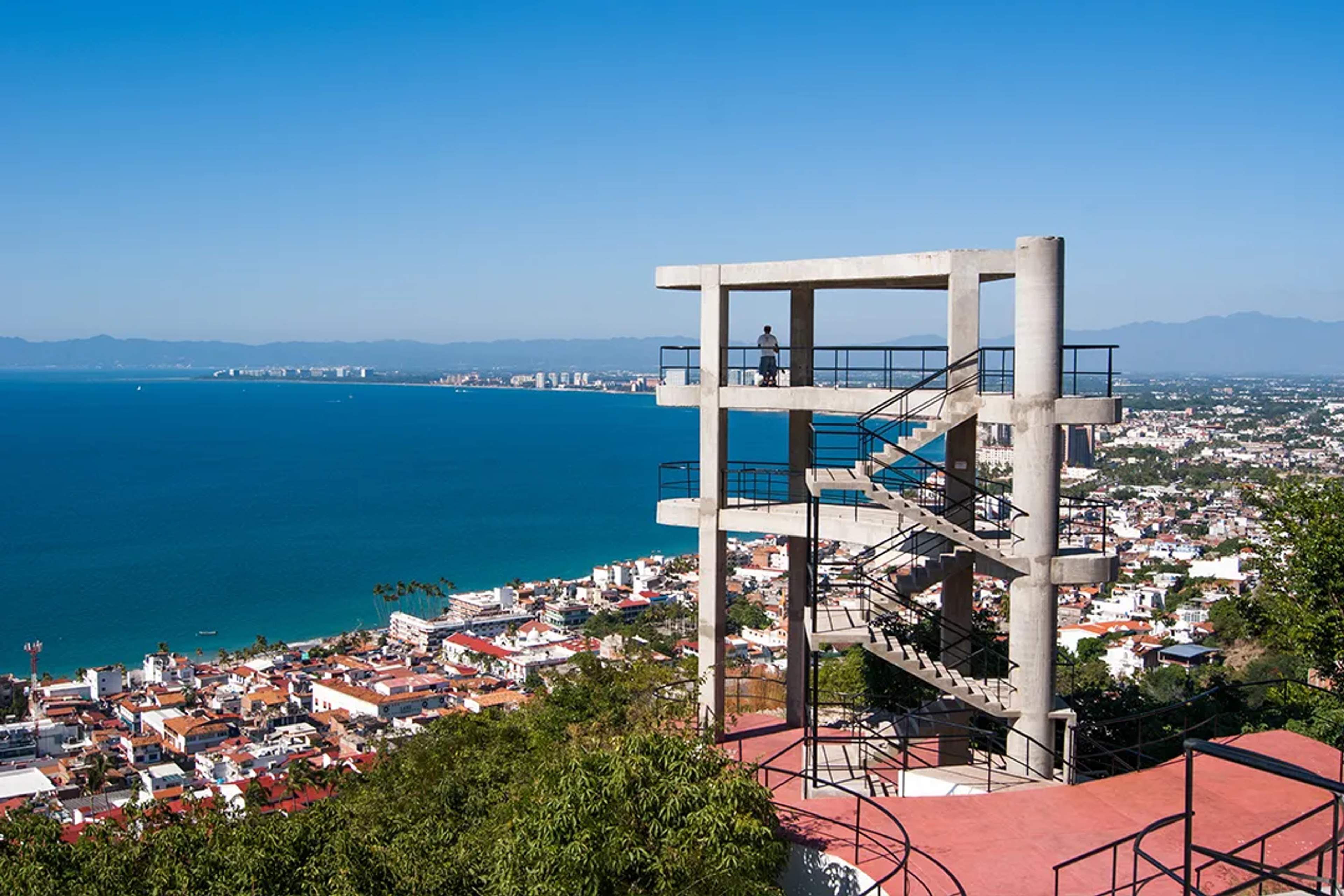
This viewpoint demands real preparation:
- You'll ascend over 300 steps on sharp uphill grades with uneven pavement
- This qualifies as a genuine workout rather than a casual walk to a viewpoint
- Wear proper hiking or trail running shoes and carry more water than you think necessary
- Visit during early morning hours (before 9 AM) or late afternoon (after 4 PM) to avoid intense midday heat
The exposed hillside offers minimal shade, and the tropical sun intensifies the physical demands. Access begins from downtown via Abasolo Street, continuing to Emiliano Carranza Street before reaching the trailhead.
7. Vallarta Botanical Gardens
The Vallarta Botanical Gardens, located in the Sierra Madre foothills a short drive south of downtown, operates as a non-profit conservation center dedicated to preserving and showcasing western Mexico's biodiversity. This facility combines structured botanical collections with integrated natural forest trails, creating educational depth that casual resort gardens cannot match.
The gardens feature a dedicated orchid laboratory for active conservation research, scientific infrastructure supporting vital preservation work, extensive collections of native Mexican plant biodiversity with emphasis on endemic species, and a hiking trail system integrated into the authentic Sierra Madre tropical forest ecosystem.
Certified naturalist guides are available on-site to explain the ecological significance of the collections rather than simply naming species. The gardens host various events throughout the year, including seasonal celebrations and educational workshops. For current exhibitions and special programming, check their website before your visit.
8. Marina Vallarta
Marina Vallarta offers Puerto Vallarta's most sophisticated urban landscape, providing a striking contrast to the historic Mexican character of the Zona Romántica. This modern enclave embodies contemporary luxury through its meticulously designed yacht harbor, where gleaming vessels worth millions line 354 slips accommodating boats up to 160 feet.
The marina's elegant boardwalk buzzes with activity as visitors stroll past high-end boutiques, art galleries, and some of the city's finest dining establishments. Waterfront restaurants feature international cuisine ranging from Mediterranean to Japanese fusion, with tables overlooking the yacht-filled harbor where soft lighting reflects off the water during evening hours.
9. Isla del Río Cuale
Isla del Río Cuale serves as a peaceful river island, creating a natural boundary between downtown Puerto Vallarta and the Romantic Zone while simultaneously connecting these two vibrant districts. This elongated oasis of calm amid the urban energy offers a refreshing retreat with its shaded walking paths winding through lush tropical vegetation.
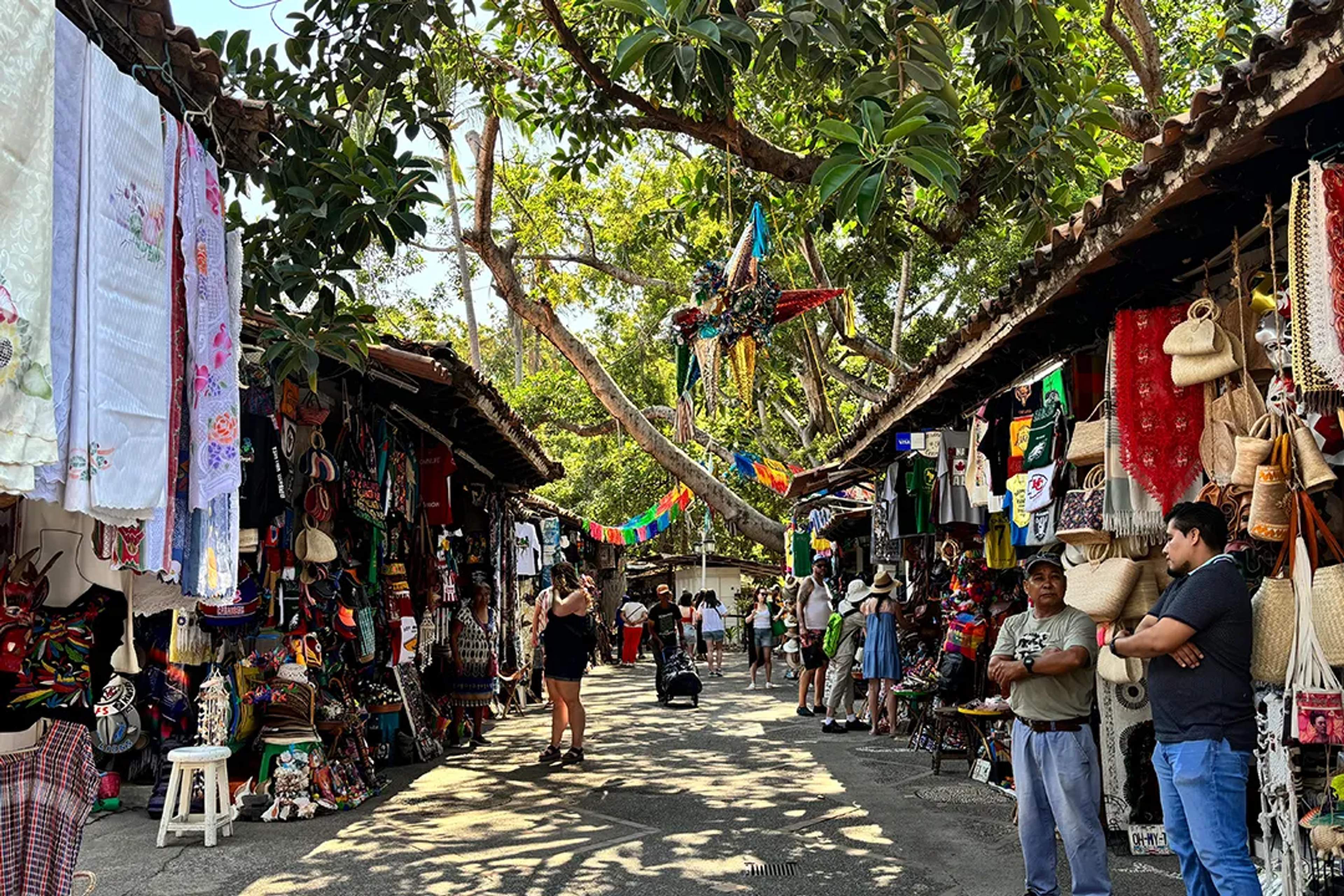
The island's centerpiece is the vibrant Rio Cuale Market, where local artisans maintain traditions through handcrafted goods, from intricate beadwork and textiles to pottery and jewelry. Visitors can practice authentic Mexican price negotiation while browsing stalls that have operated for generations, far removed from the commercial tourist zones elsewhere in the city.
Pedestrian-only bridges and pathways make exploring the island a pleasant sensory experience. The Cultural Center provides exhibitions highlighting regional heritage, while riverside restaurants offer tranquil dining beneath the natural canopy.
10. Playa Las Gemelas
Ten miles south of central Puerto Vallarta, Playa Las Gemelas offers two secluded coves with crystal-clear turquoise waters and fine white sand. These hidden beaches remain uncrowded year-round, with peak water clarity from November through May—perfect for swimming and snorkeling.
The northern cove provides easy access for families, while the southern requires a short rock scramble for greater privacy.
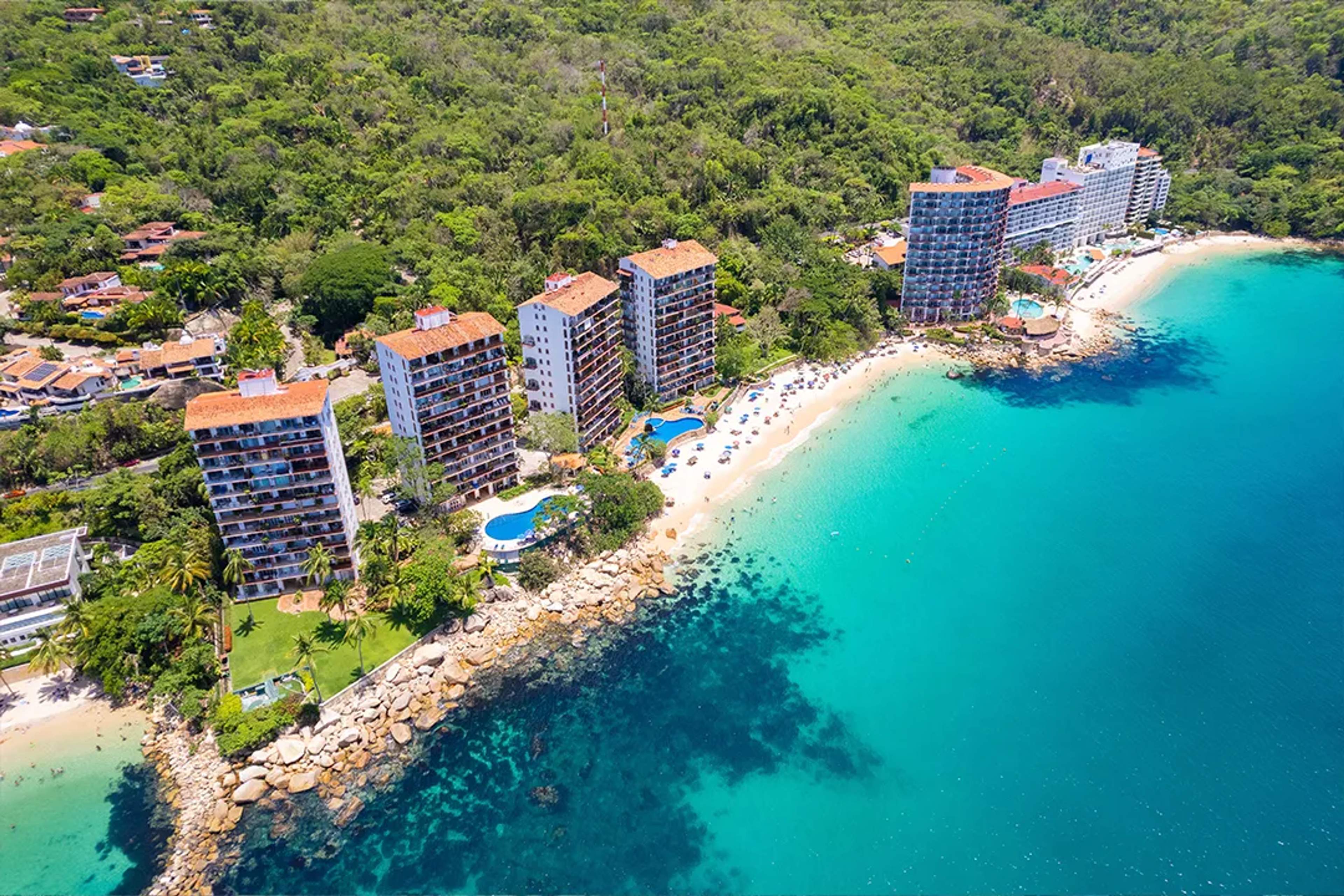
Nestled among residential properties rather than commercial developments, Playa Las Gemelas preserves a tranquil atmosphere increasingly rare along developed coastlines, offering an authentic escape from bustling resort beaches.
Explore Puerto Vallarta's Must-See Spots During Your Stay
These 10 points of interest demonstrate Puerto Vallarta's dual appeal to adventure and eco-travel enthusiasts. The Malecón and Zona Romántica provide cultural depth through preserved architecture and authentic Mexican neighborhood character. Los Arcos Marine Park and Vallarta Botanical Gardens deliver legitimate conservation access with scientific research backing their educational value.
Playa Las Gemelas and Mirador Cerro de la Cruz reward physical effort with experiences unavailable to travelers unwilling to venture beyond easy access points. We've guided thousands of travelers to these locations over the years, and we know Puerto Vallarta succeeds by maintaining this balance between accessible cultural attractions and genuine adventure requirements.
Use these locations as your foundation, then explore our tours page to choose guided experiences that match your adventure interests and fitness capabilities.
